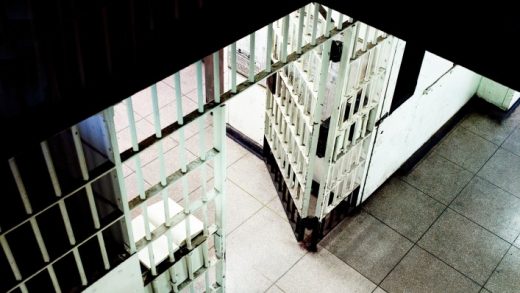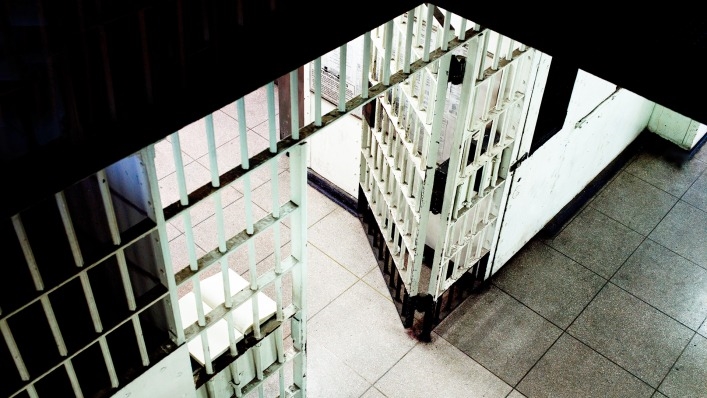To End Mass Incarceration, Start With City Policies
In Lake County, Illinois, a region of around 700,000 people directly north of Chicago, around 40 people die of an opioid overdose each year. Mundelein, a town of around 33,000 people, is at the center of the epidemic. In 2015, Steve Lentz, the mayor of Mundelein, approached Police Chief Eric Guenther, concerned over the deaths of young athletes who had become addicted to prescription painkillers and then sought out heroin.
Lentz was especially concerned over the deaths because Lake County has been attempting to curb its heroin epidemic since 2012, when the local state’s attorney founded the Lake County Opioid Initiative to bring together a coalition of law enforcement and elected officials to address the issue. At the center of the initiative was equipping local officers with naloxone, to counteract potentially fatal overdoses. But as officers began to make repeat visits to the same homes to inject the same people with naxolone, they began to wonder what they could do to address the issue more comprehensively.
It’s a question a handful of cities and organizers at the national level have been grappling with for years. Inspired by progress in places like Mundelein, the National League of Cities (NLC) has launched a technical assistance program, which will begin this fall, to help cities implement robust addiction treatment and jail-use reduction strategies. While the assistance will be tailored to each city, says Laura Furr, program manager for justice reform and youth engagement at NLC, the results might look something like the program Mundelein came up with.

A Way Out, which Guenther launched in Mundelein in 2016 in collaboration with local hospitals, courts, probation departments, and the state’s attorney, is that more comprehensive solution. A little more than a year old, the program is a free, voluntary initiative hosted through police stations in Lake County, and has treated 144 people to date. Any person struggling with addiction–for opioids, but also for alcohol or other drugs–can walk into a station, request to join the program and be immediately directed to either outpatient or inpatient care. Collaboration between the state and local law enforcement and courts systems is crucial because through A Way Out, officers can decide to direct someone to treatment instead of arresting them and putting them in jail for use of illegal narcotics.
Since the opioid epidemic began to take hold nearly a decade ago, it’s been a driver of overcrowding in local jails, and an indicator that punitive war-on-drugs tactics, which prioritize arrest and criminalization over treatment, are failing to stymie the crisis. In Dearborn County, Indiana, for example, it’s estimated that 225 of the 250 inmates have a drug addiction, yet the available treatment program can only treat 40. Allocating resources toward treatment, instead of spending $11.5 million to expand the jail as the county has planned, could both lower the number of people in jail and begin to help people in need.
But places like Mundelein have quietly become examples of how better to treat addiction and lower cities’ use of jails, and the NLC’s technical assistance program wants to make their tactics more widespread. “The use of jails has dramatically increased in the last 30 years,” Furr tells Fast Company. And while the conversation around mass incarceration in the U.S. tends to focus on large prisons, the rate of incarceration in jails has risen most dramatically in rural areas, and small-to-medium sized metro areas, Furr adds. Lack of resources, and especially, lack of alternatives for drug-use arrests, has led to an overdependence on jails that the NLC, with funding from the MacArthur Foundation’s Safety and Justice Challenge, is hoping to end.
Between now and July 21, the NLC’s Institute for Youth, Education, and Families is accepting applications from cities across the U.S. to receive 20 months of technical assistance to develop an incarceration reduction strategy, like the one currently underway in Mundelein. Key to the NLC’s assistance program, the recipients of which will be announced in August, is the idea of pre-arrest diversion, which expands the options officers have when they encounter someone in need of assistance in the community. “So instead of it just being arrest or nothing, it could be a referral with a follow-up to services that the person needs; it could be a physical transport to health services in the moment,” Furr says. “The point is, there is an array of services and tactics that police are trained to offer, beyond arrest.”
Alongside the implementation of pre-arrest diversion strategies, the technical assistance grants will also help cities develop the kinds of service and resource centers to which officers could divert people. “The lack of available treatment centers and services has been one of the reasons why jail has ended up as the default for people struggling with mental health issues and addiction,” Furr says. Developing a city-run treatment program could look something like Kansas City’s Assessment and Triage Center, which opened last fall to meet a crucial need in the city: Helping people in distress who in the past, would have been delivered to the county jail. The Assessment and Triage Center, which houses various detox wards and mental-health crisis wards, stabilizes people, and refers them on to more permanent services in the region. “In this way, cities can act as connectors between people and services that may exist, but are underutilized because people don’t know about them or can’t access them,” Furr says.
The technical assistance program will connect the six new cities looking to implement jail-use reduction strategies with those already doing so, but also tailor tactics to each city’s particular needs. To that end, the cities the NLC will select, Furr says, will be diverse in issue areas and demographics, so the learnings from the technical assistance program can be broadly applied in the future.
A new technical assistance program will help local governments and law enforcement develop alternatives to arrest for people suffering from addiction and mental illness.
In Lake County, Illinois, a region of around 700,000 people directly north of Chicago, around 40 people die of an opioid overdose each year. Mundelein, a town of around 33,000 people, is at the center of the epidemic. In 2015, Steve Lentz, the mayor of Mundelein, approached Police Chief Eric Guenther, concerned over the deaths of young athletes who had become addicted to prescription painkillers and then sought out heroin.
Fast Company , Read Full Story
(79)



